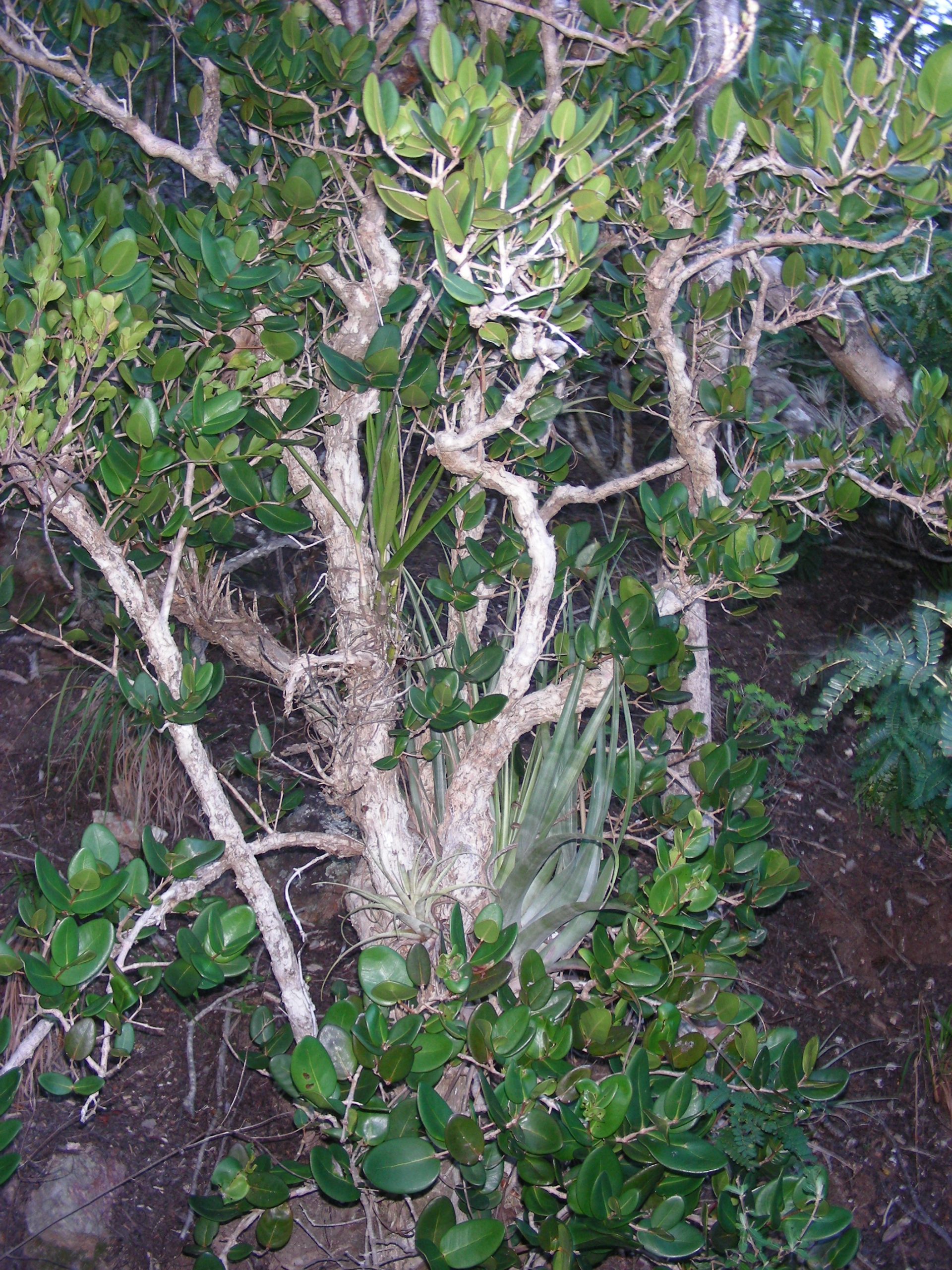Virgin Islands National Park Endemic Plant Gets Urgent Habitat Management Assistance from Park Officials
Virgin Islands National Park (VINP) covers nearly 60% of the island of St. John and offers miles of trail for hikers. Yet it wasn’t enough for somebody on the island. In 2001, a clandestine trail clearer cut a four-foot wide path through the remote White Cliff area of the park. Right through center of the main population of Earhart’s stopper (Eugenia earhartii), a rare island endemic tree.
Earhart’s stopper is a long-lived tree of the Myrtle family found only in VINP. The main population, the one callously cut through for an illegal trail, was discovered in 1990 by Pedro Acevedo. Its habitat is a leguminous scrub-thicket, a variant of tropical dry scrubland, which builds up a thick layer of duff (the decaying leaf litter on the forest floor) and is dominated by a tree called Amarat (Senegalia muricata). Despite a geographic distribution limited to an island of barely twenty square miles, requiring highly specialized soils loaded with manganese, iron and other metal precipitates (generally not seen as welcoming to many plants), and having densely-packed populations, the species had been highly successful – but faces many threats.
The trees are also long-lived and slow-growing, with many trees achieving bases approaching a half meter with growth increments of far less than a millimeter per year. This only accentuates the damage from the trail. And that damage was not only from the initial cutting, but from the intrusion from hiking enthusiasts, tourists, pigs, and goats that the trail subsequently prompted. The habitat had been intermittently grazed by goats for decades, but animals follow openings and the new trail took them right through the heart of a rare plant population. Fortunately, Earhart’s stopper has an advocate, and the staff at VINP have been taking action.
Gary Ray, Ph.D., a plant ecologist who often collaborates with St. George Village Botanic Garden, has been working with the National Park Service and studying Earhart’s stopper for years. In 2013, his concern for the damage from the trail prompted him request for the closure of the habitats encompassing the core population and an adjacent sub-population. The request was granted. Though temporary, the closure allows some time for recovery and aids the continuing population ecology and genetic research. A recent request for controlling free-roaming feral goats in the vicinity of the population has also been heeded by Park officials.
Research will be key to conserving and managing the species going forward, and much has been learned about the species. Recent surveys have revealed another 200 individuals belonging to the core population, now approaching 1,000 individuals. The canopy height ranges from 1-3 meters, and the basal diameter averages 9 cm. The core population has a disjoined segment some 600 meters to the west. It is likely that these two distinct aggregations were conjoined in the past. Habitat destruction may account for this separation, as the leguminous scrub-thicket habitat extends more less uninterrupted along the coastal ridgeline. A very small second population, no larger than two dozen individuals, occurs 3 km to the east of the core population. Propagules will soon be going to St. George Village Botanical Garden on nearby St. Croix island for added ex situ conservation. Yet there is more to do: Gary and the NPS staff hope to measure and map every individual in anticipation of future federal listing and, hopefully, even more support.

